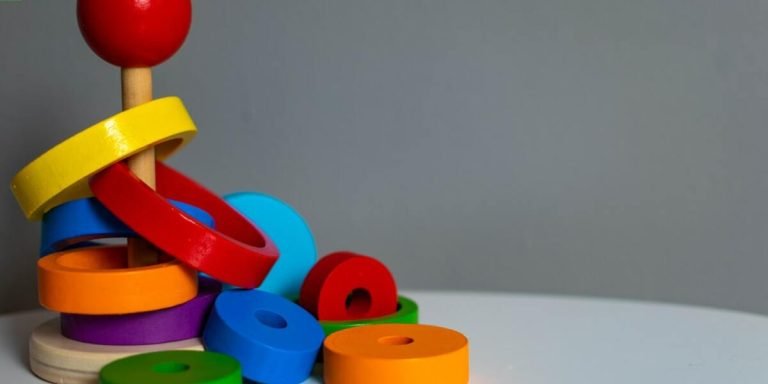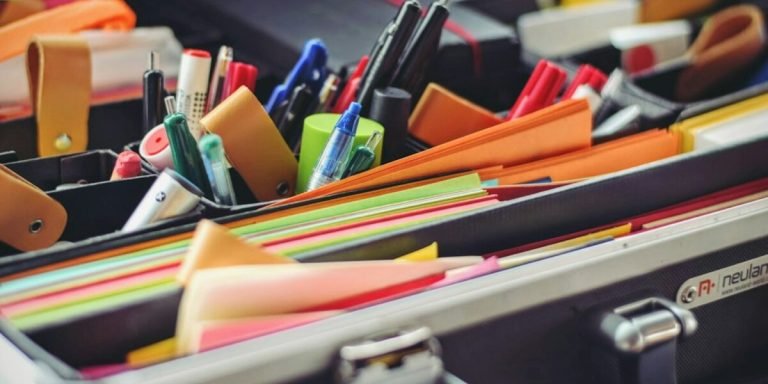How to Get an IEP: Understanding the Process for Your Child’s Education
Understanding the process of “how to get an IEP”, or Individualized Education Program, can sometimes be a daunting task for parents navigating their way through special education resources and support. While it may seem overwhelming at first glance, gaining clarity on how this works forms the bedrock of your child’s individual learning journey. The IEP serves as a tailored roadmap designed specifically catered to each student’s unique needs- aiming towards cognitive growth, emotional development, and academic progress.
The key is breaking down the procedure into manageable steps—this not only ensures you’re well prepared but also helps in securing all necessary supports your child requires during his/her educational tenure. This blog post aims to guide you with comprehensive insights about what an IEP entails so that you have clear expectations from the start – everything from pre-evaluation phase right until its execution while maintaining regular follow-ups ensuring continuous improvement along our shared goal – providing quality education for every child.
Did you know?
Did you know? Around 6 million children in the United States receive special education services through Individualized Education Programs (IEPs), according to the National Center for Education Statistics.
Understanding the Initial Steps to Acquire an IEP
Starting the journey towards acquiring an Individualized Education Program (IEP) can seem daunting for many parents. Yet, as we navigate through 2023, advancements in technology and increased access to educational resources have made it a more straightforward process than ever before. This is especially true when you understand initial steps involved.
The first step involves recognizing your child’s unique learning needs and engaging with their teacher or school counselor about these concerns. In our digital age, collecting evidence of any struggles could be facilitated by various online tools such as screen recording software or video conferencing platforms where discussions pertaining to the child’s academic development are held.
Another critical aspect on this path includes requesting formal evaluations that detail not just your youngster’s strengths but also areas they might require assistance with; in today’s digitally-driven landscape there exist numerous special education resources offering different evaluation methods which can provide comprehensive insights around myriad aspects of your child’s developmental progress – from cognitive processing abilities to social-emotional wellness parameters.
Receiving an IEP isn’t just about acknowledging academic difficulties – remember this unfolds as a collaborative effort involving educators, therapists and parents working together towards empowering each individual learner! Today’s era offers technologically-enabled solutions that streamline communications between all parties while ensuring everyone stays updated on decisions concerning student welfare thus promoting more cohesive approaches designed around every young mind they support.
Identifying Signs Your Child May Need Special Education Services
Taking into account the unique learning needs of a child is vital when considering their education. If your kid exhibits any signs that may indicate a need for special education services, it’s crucial to understand what steps you should take and how technology can assist in this regard.
The process of acquiring an Individualized Education Program (IEP) notably starts by identifying whether your child might require specialized educational resources and support. To start with, let’s discuss ‘how to get an iep’ effectively by understanding potential indicators that suggest they need extra assistance.
Consistent struggles in school tasks are often at the forefront of these identifiers. Should there be repeated difficulties comprehending certain lessons or performing specific assignments even after considerable efforts on behalf of educators and parents alike? This situation could signify a possible requirement for more tailored teaching methods.
Moreover, frequent behavioral issues or emotional outbursts present another signpost pointing towards special education consideration. Often attributed to frustration stemming from academic challenges or difficulty fitting into established educational frameworks, such behaviors demand attention.
Thirdly, slower development compared to peers signifies yet another important hint for parents and teachers alike as children who lag behind their age-mates regarding cognitive, physical, social-emotional growth potentially necessitate IEPs.
While all aforementioned signs offer valuable pointers about your child’s learning needs; remember they don’t necessarily imply compulsory enrollment under Special Education programs unless supported directly through professional diagnosis confirming disorders affecting regular study capacities adversely.
Initiating Conversations with Educators and Professionals
Taking the first step towards obtaining an Individualized Education Program (IEP) for your child can be a daunting task. Understanding how to get an IEP begins with initiating conversations with educators and professionals in the field of childhood education, as well as leveraging special education resources and support.
Firstly, it’s important that you inform yourself about what getting an IEP entails. In 2023, there is much technology integration within this process which makes understanding its intricacies somewhat easier than before.
You might start by arranging a meeting with your child’s teacher or school principal. During these discussions, express your concerns about your child’s progress considering their unique needs.
Next comes open communication line between parents and teachers – essential for creating effective IEPs. Utilize emails or face-to-face meetings where necessary so everyone stays on track regarding student expectations and available interventions during the ongoing academic year.
Comprehensive Guide to Navigating the IEP Process
As a parent or an educator, navigating the IEP (Individualized Education Program) process for a child can be overwhelming. You might wonder where to begin and how technological advancements come into play in 2023. This guide offers useful insights that will help you fulfill your roles efficiently while integrating technology with education.
Essentially, obtaining an IEP begins with understanding the unique needs of the student as well as identifying their areas of strength and challenges. Based on this initial assessment, learning goals are set which form part of the legally binding document known as an IEP. The introduction of technology has revolutionized how these assessments are made; digital tools enable more thorough evaluations to identify special educational needs accurately.
Technology also plays a significant role when it comes to executing various components included in an IEP like personalized teaching methods or meeting specific therapeutic requirements among others. Various resources such as online tutorials equipped with interactive modules make learning dynamic leading towards increased engagement from students who have difficulties following traditional methods.
Having access to support within this realm is essential too! There’s no need for parents or teachers feeling stranded because there exists numerous online communities offering specialized advice regarding implementing IEPS effectively through technological means – forums full of experts willing to share knowledge at one’s convenience anytime anywhere!
So rest assured that even though embarking on getting an iep may appear daunting initially but modern-day educational innovations offer promising possibilities making this journey smoother than before.
Documentation Gathering: Medical Reports, Academic Records, and Teacher Observations
Dealing with an Individualized Education Program (IEP) for your child can feel like navigating a maze. Your first key to understanding “how to get an IEP” lies in gathering thorough and accurate documentation.
Start with medical reports. A comprehensive history of the child’s health issues, including doctors’ notes, therapy evaluations, or diagnostic assessments will serve as prime evidence of any disabilities that might impact educational performance.
Next comes academic records which includes report cards, standardized test scores and progress monitoring data. These materials offer irrefutable proof about how well your kid is performing at school compared year by year basis against their peers. In some cases where underachievement becomes evident despite normal cognitive functioning or learning capacity; this could be another indication warranting special intervention via IEPs.
Lastly but perhaps most significant are teacher observations: encapsulating everyday classroom realities often unnoticed on traditional achievement charts.
Teachers impart front-line insights concerning students’ social interactions, behavioural patterns plus adapting skills within real-time settings whereas parents may not have a clue otherwise.
The Role of Evaluations in Developing an Individualized Education Program
Crafting an Individualized Education Program (IEP) calls for a thorough understanding of the child’s needs, to ensure they get the right resources and support. It might seem like a daunting process but worry not, this guide is here to help you know how to get an IEP.
Evaluations play pivotal roles in shaping an effective IEP plan that guarantees tailored education for your child. They form the bedrock for making critical decisions about special education services. Here’s what evaluations entail:
The first step towards getting an IEP starts with conducting initial assessments or evaluations on your youngster by a team of specialists – psychologists, speech therapists, occupational therapists just to mention a few.
They carry out several tests including academic achievement tests and cognitive ability tests among others – all aimed at identifying areas where your youngster may be experiencing difficulties.
Reevaluations happen periodically after the initial evaluation. This often occurs every three years as mandated by law unless parents agree that it isn’t necessary.
This is crucial since children grow and change over time; hence their educational needs also evolve necessitating periodic reassessments.
Once completed these results need interpretation which can feel overwhelming if you’re new in doing so. Therefore seeking assistance from professionals such as school psychologists would come in handy!
Collaborative Strategies for Parents and School Teams in IEP Development
In today’s rapidly evolving education landscape, the role of technology in driving better outcomes for special needs students cannot be overstated. Incorporating these revolutionary tools within Individualized Education Program (IEP) development is critical to ensuring that each child receives a personalized learning pathway. One key strategy involves both parents and school teams working collaboratively, leveraging technological applications to streamline and enrich the IEP process.
The involvement of parents along with school personnel forms an essential part of developing effective IEPs. This partnership becomes more seamless when fostered under the umbrella of technology integration in education. Accessible digital platforms can provide comprehensive data on student progress while also offering resources aiding teachers and families alike in creating robust plans catering specifically to individual children’s educational requirements.
Converging mindsets between educators and parents around how best to utilize emerging technologies fosters a joint responsibility towards molding optimal Educational programs for children needing additional support beyond traditional pedagogy parameters used by mainstream schools. As we look into 2023, such shared responsibilities reinforced through consistent communication via modern tech interfaces make our journey smoother toward achieving global goals for inclusive quality early childhood education.
Establishing Effective Communication with Your Child’s Educational Team
Establishing effective communication with your child’s educational team is a crucial step towards advocating for the special education resources and support necessary to properly assist in individualized education plan (IEP) development. So, you may wonder ‘how to get an IEP?’ The process starts by working hand-in-hand with educators through collaborative strategies.
Earlier this year, 2023 saw increasing advancements in technology integration within education systems across the globe. Make use of these innovative tools to effectively communicate with your child’s teachers or other school staff members involved in their learning journey.
Ensure all parties agree to use technologies such as email, messaging software like Slack, and video call platforms like Zoom or Teams for virtual consultations and check-ins. Choose the platform that works best for everyone involved. Since the pandemic outbreak, many parents have become more technologically savvy due to work-from-home arrangements. This makes it easier to use digital channels for timely correspondence about your child’s learning progress.
Get updates regularly from teachers but limit them only when there significant changes occurred so that both sides won’t feel overwhelmed while also staying informed at every turn. In addition be mindful about choosing times which are convenient for everyone keeping mind different time-zones geographic locations if applicable.
Remember always respect one another space boundaries knowing full well each member has its personal life deal aside professional commitments roles play children s academic betterment improvement.
Participatory Planning: Advocacy and Inclusion in the Decision-Making Process
Participatory planning is a crucial factor when it comes to ensuring the success of students who need special education. As key stakeholders, parents and school teams must understand how to get an IEP that adequately meets each student’s unique needs.
Advocacy plays a vital role in this process. By knowing their child’s rights and understanding educational jargon, involved parties can ask questions or deliver insights during meetings effectively—paving way for better decision-making strategies concerning the individualized education program (IEP).
Inclusion also forms a significant part of participatory planning—it means every team member has equal say on matters at hand. Parents should not feel intimidated by professional educators; instead, they should aim to collaborate with them through open dialogue about specific issues like curriculum modifications or required therapy sessions.
However, achieving effective collaboration doesn’t come without its challenges. Oftentimes there might be disagreements within the team over what would constitute proper support for your child’s learning needs—in such cases remember: consensus isn’t always necessary as long as respectful discourse prevails.
Conclusion
In the journey of understanding “how to get an IEP”, it’s important to remember that patience, persistence and a thirst for knowledge are your best allies. Navigating through this complex process may seem daunting initially but rest assured, every step taken is a giant leap towards securing a brighter future for your child.
Don’t stop here! Our website is bursting with insightful articles aimed at further simplifying childhood education and offering support for parents and educators alike. Whether you’re seeking advice on teaching strategies or looking for ways to engage young minds effectively – know that we’ve got you covered.
So why wait? Dive in now – because when it comes to nurturing our children’s potential, there isn’t such thing as too much information or aid.







